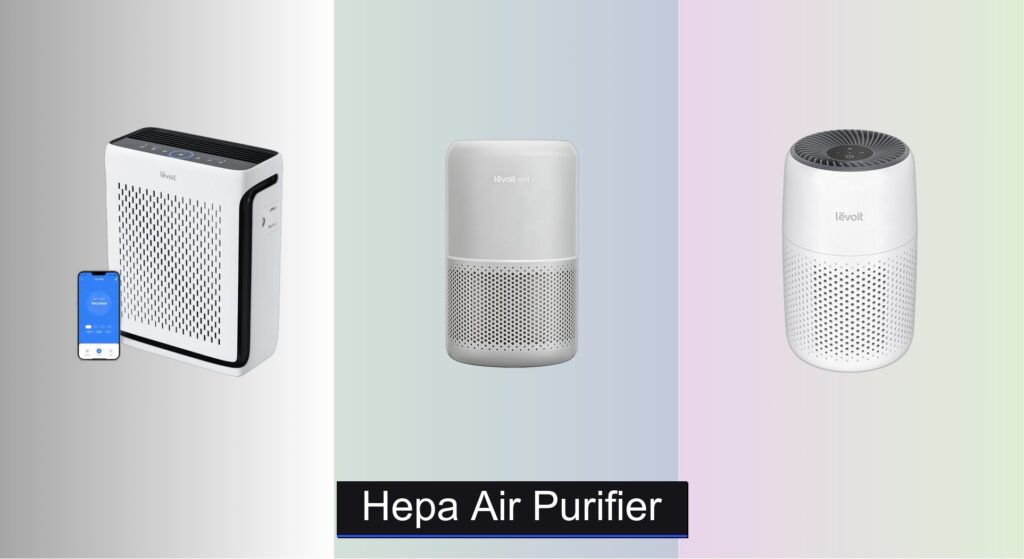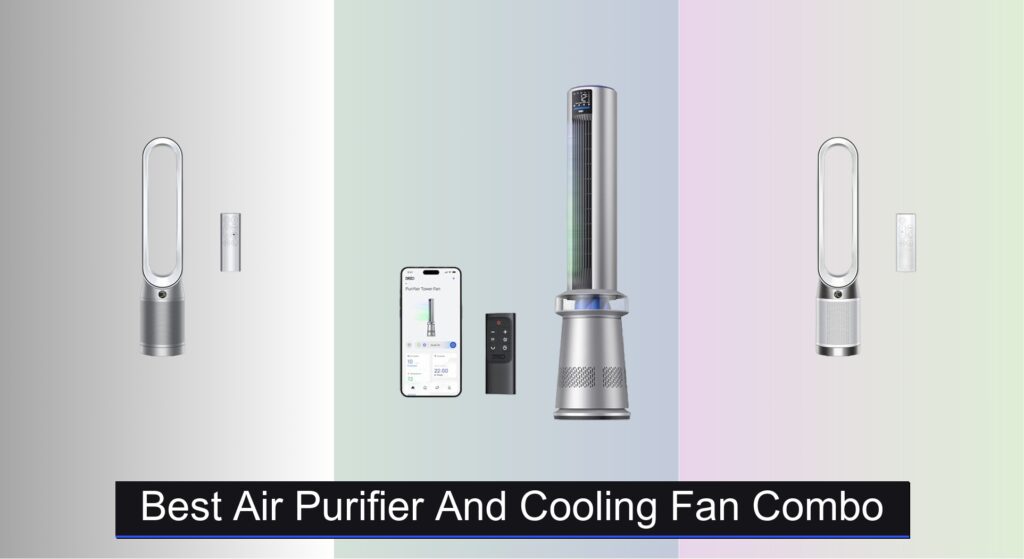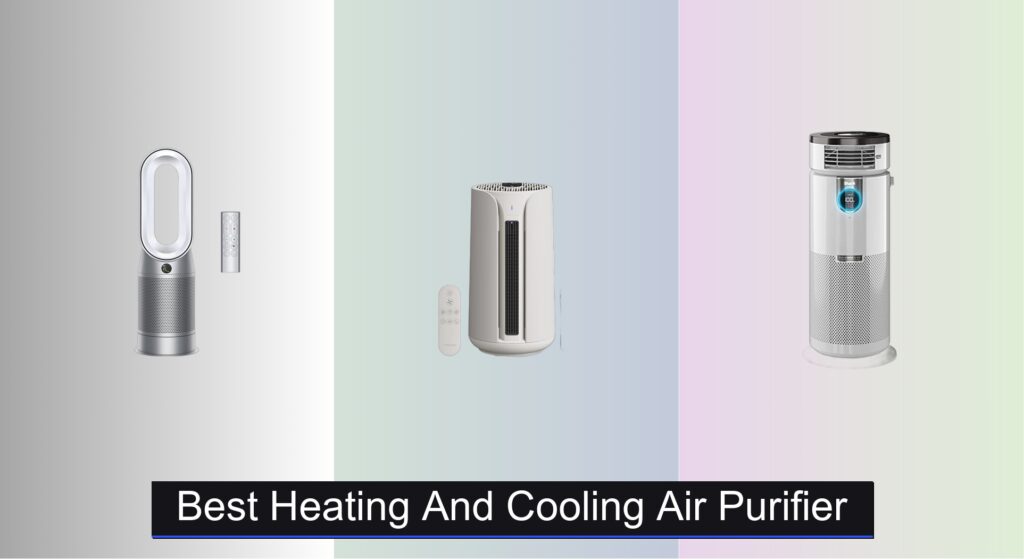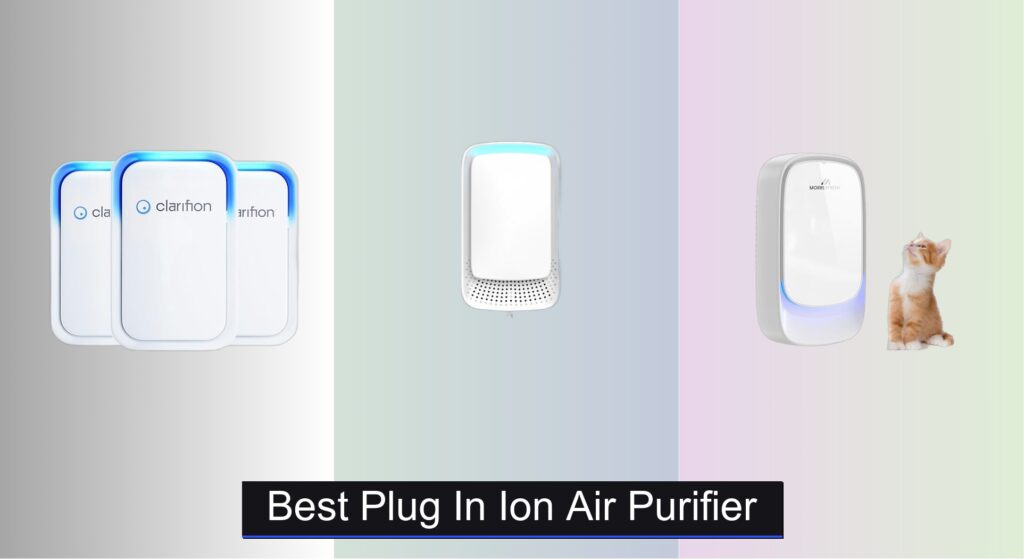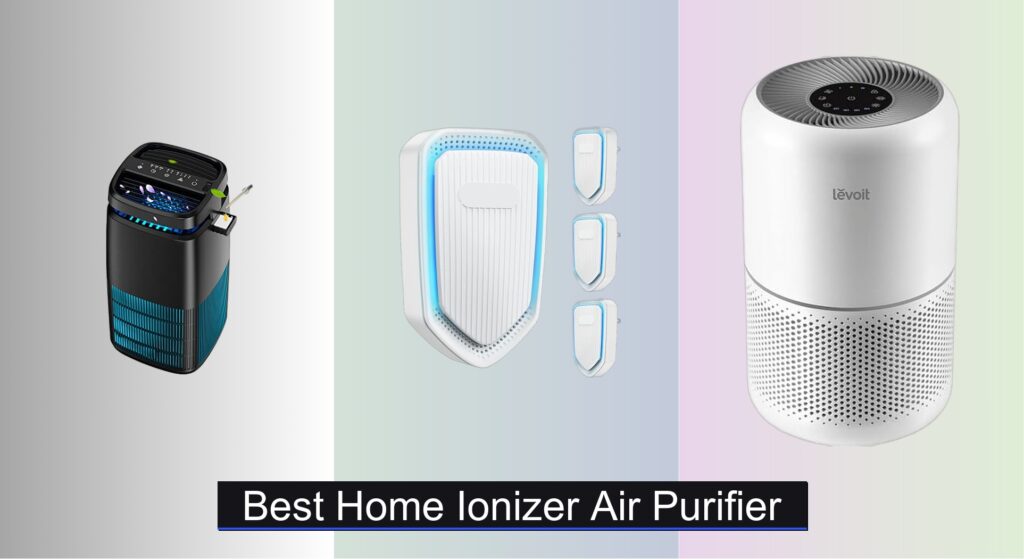Poor indoor air quality can aggravate allergies, worsen asthma, and leave your home feeling stuffy and unpleasant. Pollutants like dust, pet dander, pollen, and cooking odors are often invisible but constantly circulating—especially in tightly sealed modern homes. Many people turn to air purifiers for relief, but not all deliver the clean air they promise.
A true HEPA air purifier captures 99.97% of airborne particles as small as 0.3 microns, making it essential for effective filtration. When combined with a high CADR (Clean Air Delivery Rate) and proper room sizing, the right model can make a measurable difference in your indoor environment. We analyzed over 70 models, factoring in performance, filter costs, noise, and smart features to find the best HEPA air purifiers for every need and budget. Keep reading to discover which models truly deliver on their promises.
Best Options at a Glance

GermGuardian 4-in-1 UV-C Air Purifier
Best with UV-C Technology
- 743 sq. ft.
- True HEPA
- Yes
- Activated carbon
- CARB, ETL, Zero Ozone
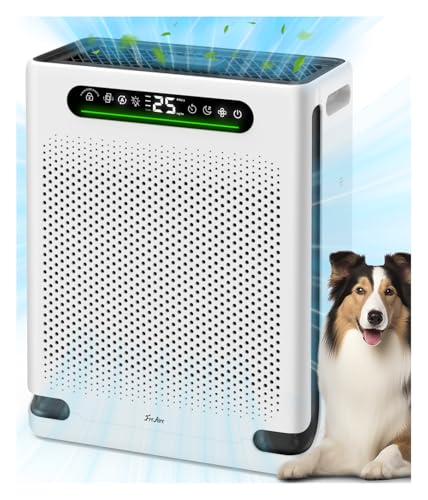
Air Purifier with Air Quality Display
Best with Real-Time Monitoring
- 2,600 sq. ft.
- HEPA with washable pre-filter
- Real-time PM2.5 sensor
- 20dB sleep mode
- Turbo Pet Mode

Levoit Vital 200S-P Large Room Purifier
Best for Large Rooms
- 1875 ft”²
- 250 CFM
- 254 CFM
- 289 CFM
- 99.97%
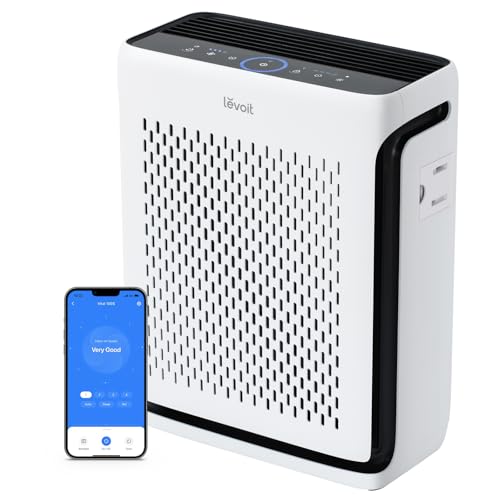
Levoit Vital 100S-P Smart Air Purifier
Best Overall
- 1,073 ft²
- Yes
- HEPA
- Smart WiFi
- Pet, Sleep, Auto

MOOKA KJ190L Washable Filter Purifier
Best Washable Filter
- 2200 ft”²
- 3-Stage HEPA
- 20dB
- 0.63 kW”h/24h
- Washable Pre-filter
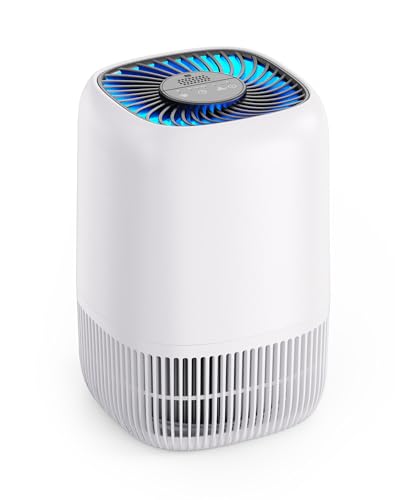
Compact H13 HEPA Air Purifier
Best Compact Design
- 1076 ft”²
- H13 True HEPA
- 22dB
- 360″° Intake
- ETL, FCC, CARB

Levoit Core Mini-P Desktop Air Purifier
Best Budget Friendly
- 3-in-1
- Up to 215 ft²
- 24 dB
- Yes
- With Fragrance Sponge

Purivortex AC400 Quiet Air Purifier
Best Quiet Operation
- 880 sq ft
- 99.97%
- HEPA 3-layer
- 215 sq ft
- 2 years

Hepa Air Purifier Review
How to Choose the Right HEPA Air Purifier
Understanding HEPA Filtration & CADR
At the core of most air purifiers is a HEPA (High-Efficiency Particulate Air) filter. True HEPA filters are designed to capture 99.97% of particles 0.3 microns in size – this includes dust, pollen, pet dander, and some mold spores. However, HEPA is only one piece of the puzzle. CADR (Clean Air Delivery Rate) is a crucial metric. It indicates how quickly the purifier cleans a specific room size. Higher CADR numbers mean faster cleaning. CADR ratings are typically provided for smoke, dust, and pollen – consider which pollutants are your biggest concern. A higher CADR for the relevant pollutant is better.
Room Size & Coverage Area
Choosing an air purifier that’s too small for your space is a common mistake. Air purifiers are rated for specific room sizes. Don’t just look at the maximum advertised square footage; consider ceiling height and the layout of the room. Open-concept spaces require a purifier rated for a larger area than a closed-off bedroom. If you’re unsure, it’s generally better to oversize the purifier slightly – it will run less constantly and be more effective.
Filter Types & Replacement Costs
While HEPA filters tackle particulate matter, other filters address different concerns. Activated carbon filters are vital for removing odors, smoke, and volatile organic compounds (VOCs). Some purifiers also include a pre-filter to capture larger particles like pet hair and dust, extending the life of the HEPA filter. Consider the cost and availability of replacement filters. Some models have washable pre-filters, saving money, while others require frequent, potentially expensive filter replacements. The frequency of filter changes will depend on usage and air quality.
Smart Features & Noise Levels
Many modern air purifiers offer “smart” features like app control, air quality monitoring, and automatic mode adjustment. Real-time air quality monitoring can be beneficial if you want to track pollution levels. Automatic mode adjusts fan speed based on detected air quality, providing convenient, energy-efficient operation. Noise level is particularly important for bedrooms or home offices. Look for models with a quiet “sleep mode” – ideally under 30dB – to avoid disruption.
Additional Features to Consider
- UV-C Light: Some purifiers include UV-C light to kill bacteria and viruses, though its effectiveness is debated.
- Pet-Specific Features: Models designed for pet owners often have enhanced odor control and filters designed to capture pet dander.
- Child Lock: Prevents accidental changes to settings.
- Energy Efficiency: Look for Energy Star-certified models to save on electricity bills.
- Aromatherapy Diffuser: A built-in diffuser can add pleasant scents to the air.
HEPA Air Purifier Comparison
| Product | Room Size (sq ft) | Filtration Type | Smart Features | Pet Focused | Noise Level (Sleep Mode) | UV-C Technology | Washable Filter |
|---|---|---|---|---|---|---|---|
| Levoit Vital 100S-P | 222 – 1,073 | HEPA, Activated Carbon | App Control, Schedules | Yes (Pet Mode) | Quiet | No | Yes (Pre-Filter) |
| Levoit Core P350-P | 217 | HEPA, Activated Carbon | None | Yes (Pet Allergy Filter) | 24dB | No | No |
| Levoit Core Mini-P | Unknown | HEPA, Activated Carbon | None | No | Unknown | No | No |
| Levoit Vital 200S-P | 1,875 | HEPA, Activated Carbon | App Control, Schedules | Yes | Unknown | No | Yes (Pre-Filter) |
| Compact H13 HEPA | 1,076 | H13 True HEPA | None | No | Unknown | No | No |
| Purivortex AC400 | 880 | HEPA, Activated Carbon | None | Yes | Unknown | No | No |
| Air Purifier with Air Quality Display | 2,600 | HEPA, Activated Carbon | Auto Mode, Air Quality Display | Yes (Turbo Pet Mode) | Unknown | No | Yes (Pre-Filter) |
| GermGuardian 4-in-1 UV-C | 153 – 743 | HEPA, Activated Carbon | None | No | Unknown | Yes | No |
| MOOKA KJ190L | 2,200 | HEPA, Activated Carbon | Timer, Child Lock | Yes | 20dB | No | Yes (Pre-Filter) |
Testing & Analysis: How We Evaluate HEPA Air Purifiers
Our recommendations for HEPA air purifiers aren’t based on opinion; they’re the result of rigorous data analysis and research. We begin by compiling a comprehensive dataset of available air purifier models, focusing on key specifications like CADR ratings (smoke, dust, pollen) and advertised room sizes. We cross-reference these claims with independent testing data from organizations like AHAM (Association of Home Appliance Manufacturers) where available.
We analyze user reviews across multiple platforms, employing sentiment analysis to identify recurring themes – both positive and negative – relating to performance, noise levels, and filter lifespan. We prioritize models with consistently high ratings for particulate matter removal and odor control, factoring in the cost of replacement HEPA filters and activated carbon filters over the unit’s lifespan.
Comparative analyses are performed based on price per square foot of coverage, energy efficiency (Energy Star certification), and the presence of features like real-time air quality monitoring and automatic mode. While we acknowledge the inclusion of UV-C light in some models, we weigh its debated efficacy accordingly. Ultimately, our goal is to identify HEPA air purifiers that deliver the best value and demonstrably improve indoor air quality.
FAQs
What does HEPA filtration actually mean?
HEPA (High-Efficiency Particulate Air) filters are designed to capture 99.97% of particles as small as 0.3 microns, including dust, pollen, and pet dander. This makes a HEPA air purifier highly effective at improving indoor air quality.
How do I determine the right size HEPA air purifier for my room?
Consider the room’s square footage and ceiling height. Don’t rely solely on the maximum advertised coverage area. It’s often better to choose a HEPA air purifier rated for a slightly larger space to ensure effective air cleaning. Check the CADR rating to ensure it meets your needs.
How often should I replace the filters in my air purifier?
Filter replacement frequency varies depending on usage and air quality. HEPA filters typically last 6-12 months, while activated carbon filters may need replacing every 3-6 months. Some models have washable pre-filters that can extend the life of the other filters.
Are smart features on an air purifier worth the extra cost?
Smart features like app control and automatic mode can offer convenience and energy savings. Real-time air quality monitoring can be valuable for those concerned about pollution levels, but aren’t essential for all users looking for a quality HEPA air purifier.
The Bottom Line
Choosing the right HEPA air purifier involves considering several factors beyond just the HEPA filter itself. From understanding CADR ratings and room size to evaluating filter costs and desired features, a little research goes a long way toward ensuring cleaner, healthier air.
Ultimately, the best air purifier is the one that best fits your specific needs and budget. By carefully weighing the pros and cons of different models, and prioritizing features like filtration effectiveness and noise levels, you can confidently select a unit that will significantly improve your indoor air quality.

